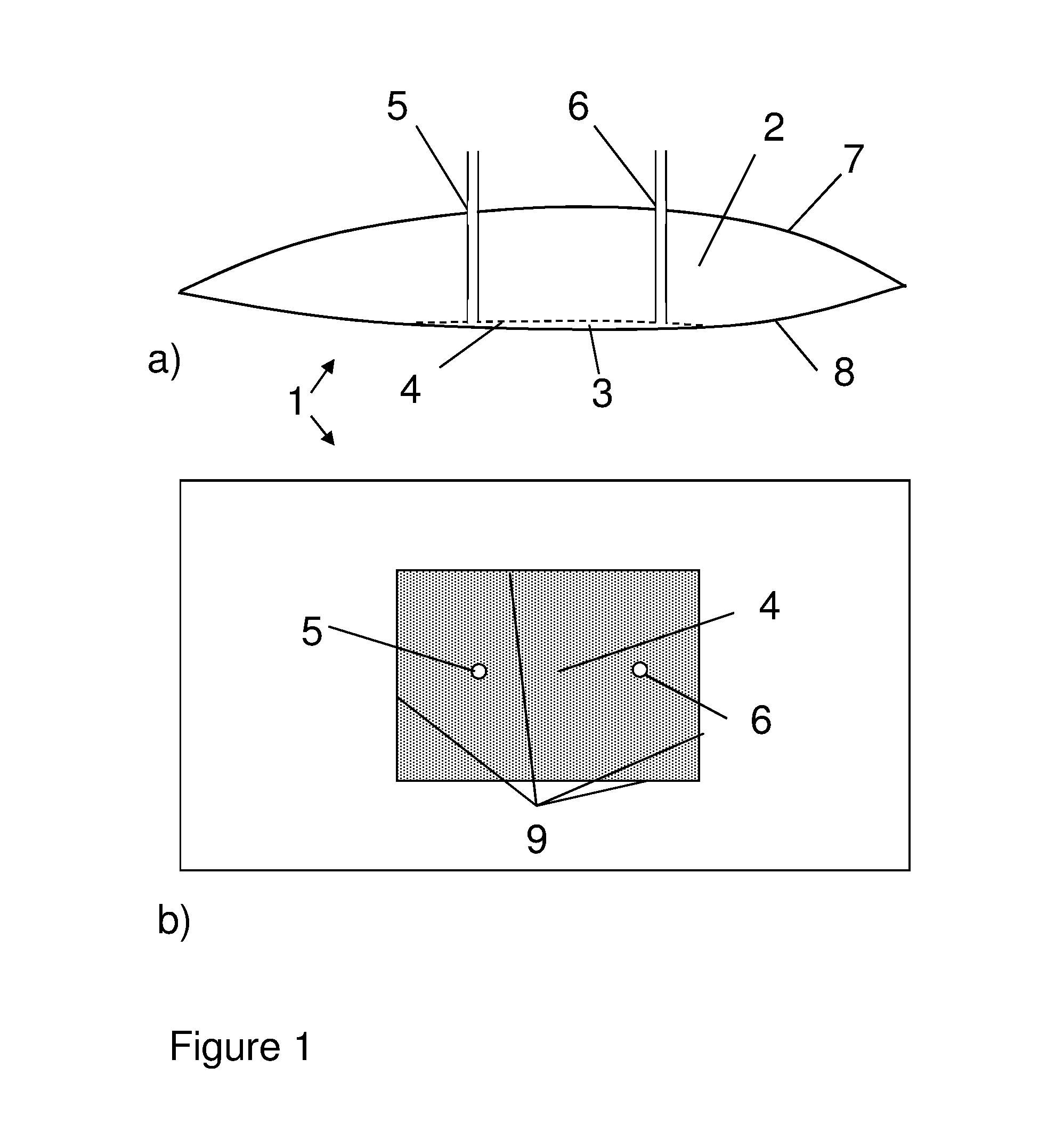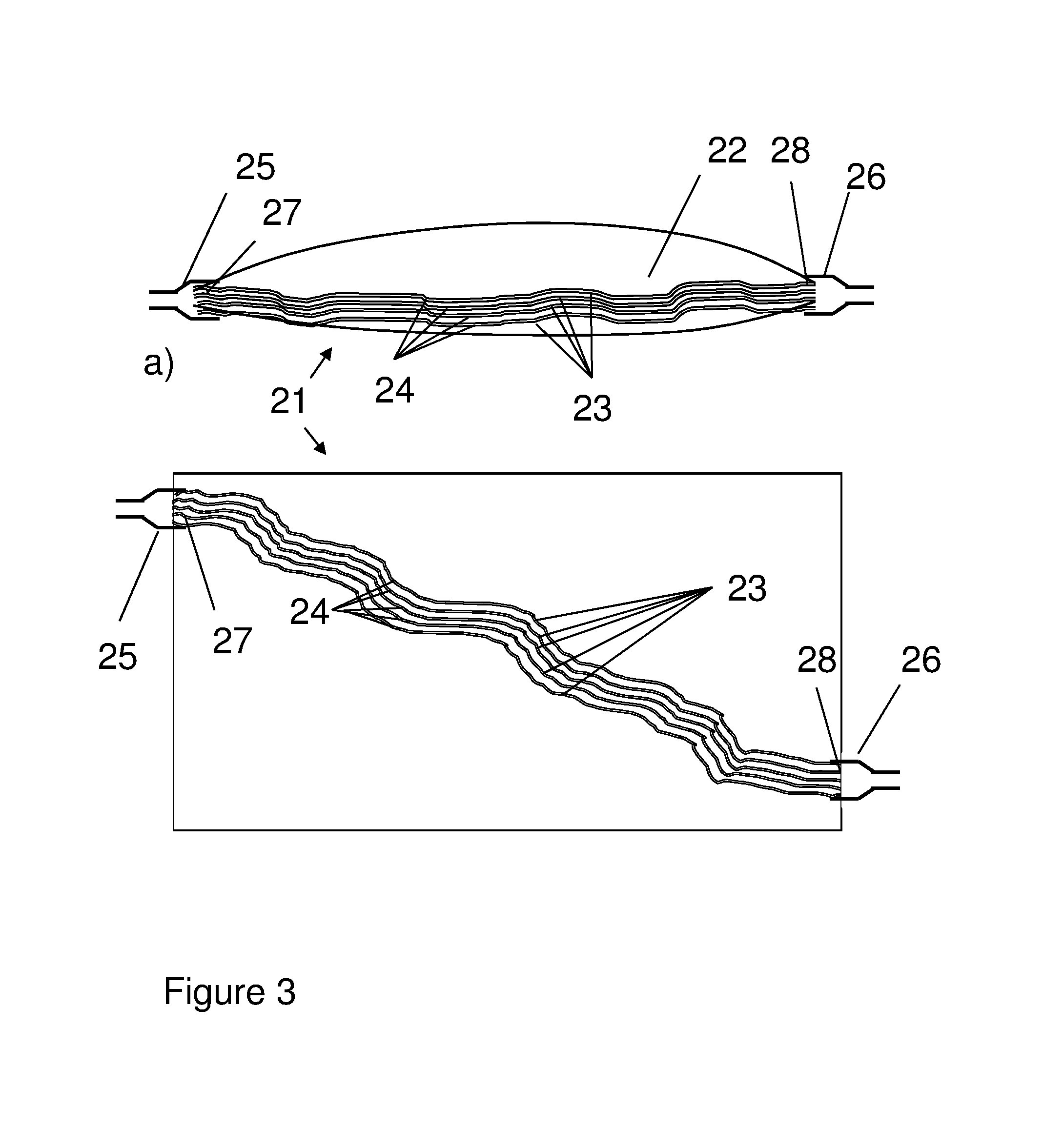Cell culture bag with internal dialysis membrane
a cell culture bag and dialysis membrane technology, applied in the field of cell culture bags, can solve the problems of inability to easily reconfigure for new applications, inability to clean and sterilize, and high installation cost of traditional systems with requisite piping and utilities, etc., to achieve easy production, avoid clogging of the membrane, and facilitate mass transport
- Summary
- Abstract
- Description
- Claims
- Application Information
AI Technical Summary
Benefits of technology
Problems solved by technology
Method used
Image
Examples
Embodiment Construction
[0021]In one aspect, illustrated by FIGS. 1-6, the present invention discloses a flexible bag 1;11;21;31;41 for cell cultivation, which comprises a cultivation compartment 2;12;22;32;42 and at least one dialysis compartment 3;13;23;33;43. The bag can e.g. have a total volume of 0.5 l to 500 l, with the cultivation compartment e.g. having a volume of 0.3-495 l. The dialysis compartment(s) is / are delimited from the cultivation compartment by one or more dialysis membranes 4;14;24;34;44 and is / are fluidically connected to a first 5;15;25;35;45 and a second 6;16;26;36;46 port in the bag. The bag can have one or more walls, of which during cultivation one wall may be defined as the top wall 7;37;47 and another wall as the bottom wall 8;38;48. The first and second ports can be mounted in one or more of the walls, such as in the top wall, and via these ports liquid may be conveyed through the dialysis compartment from one port to the other. Alternatively, the ports may be mounted in one or...
PUM
| Property | Measurement | Unit |
|---|---|---|
| thickness | aaaaa | aaaaa |
| thickness | aaaaa | aaaaa |
| thickness | aaaaa | aaaaa |
Abstract
Description
Claims
Application Information
 Login to View More
Login to View More - R&D
- Intellectual Property
- Life Sciences
- Materials
- Tech Scout
- Unparalleled Data Quality
- Higher Quality Content
- 60% Fewer Hallucinations
Browse by: Latest US Patents, China's latest patents, Technical Efficacy Thesaurus, Application Domain, Technology Topic, Popular Technical Reports.
© 2025 PatSnap. All rights reserved.Legal|Privacy policy|Modern Slavery Act Transparency Statement|Sitemap|About US| Contact US: help@patsnap.com



